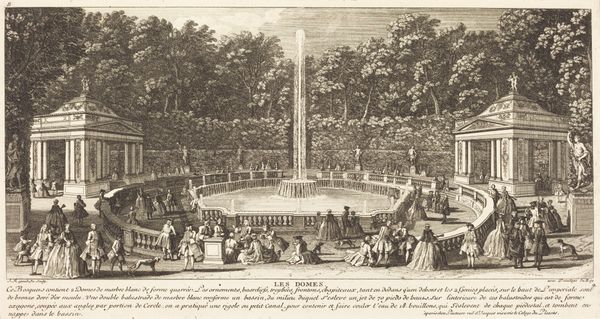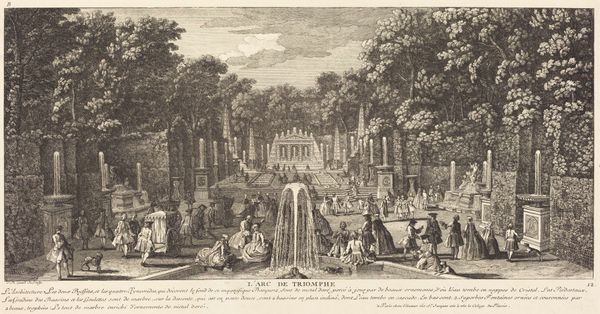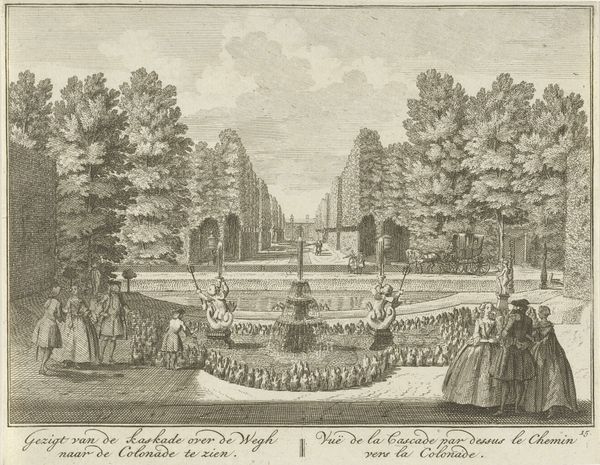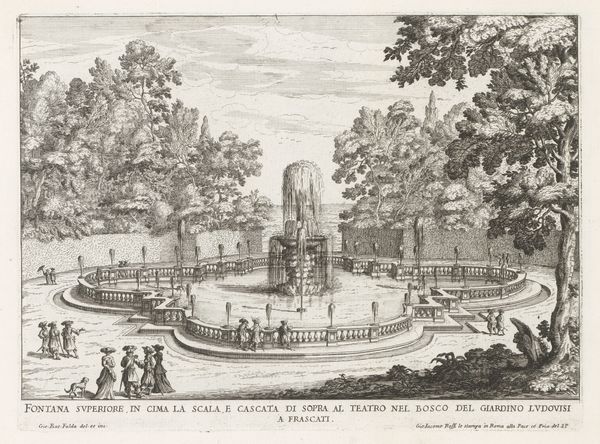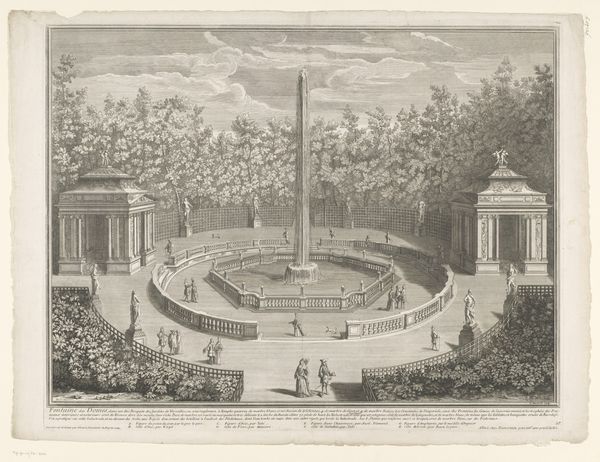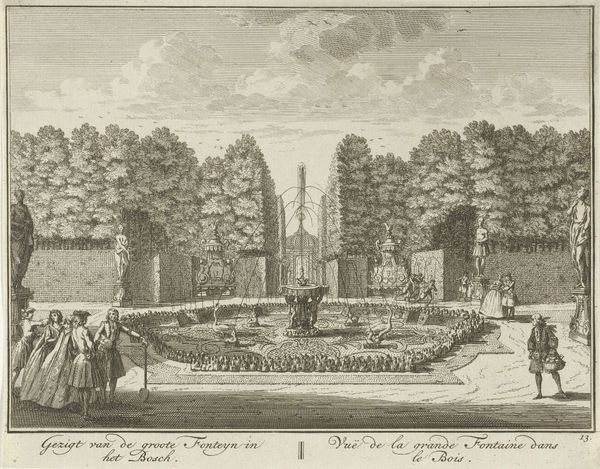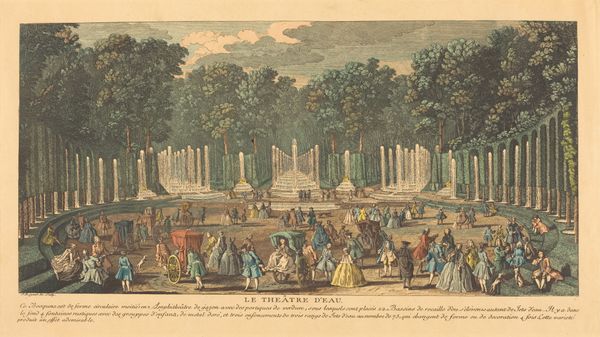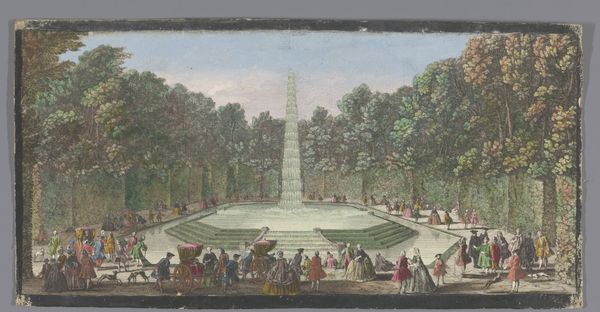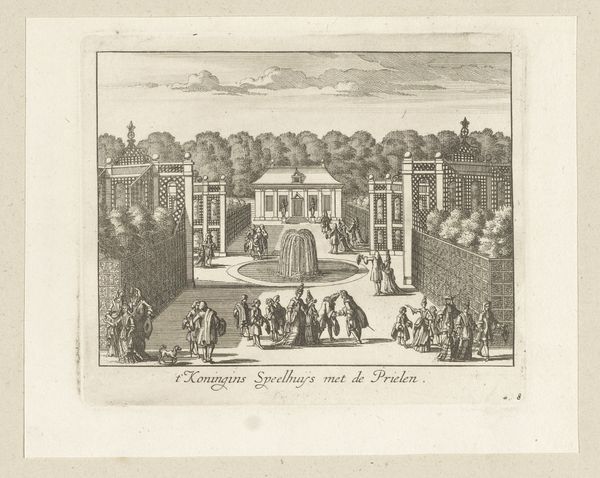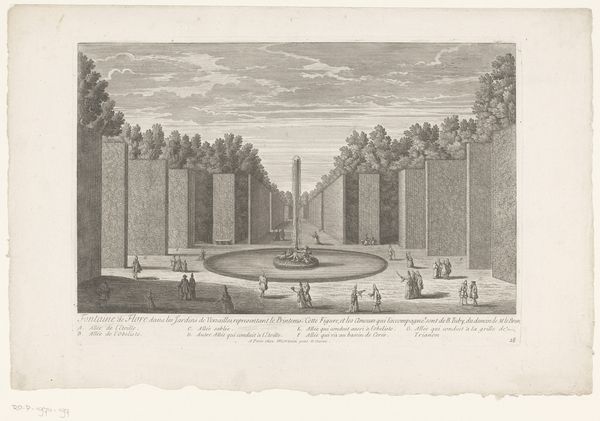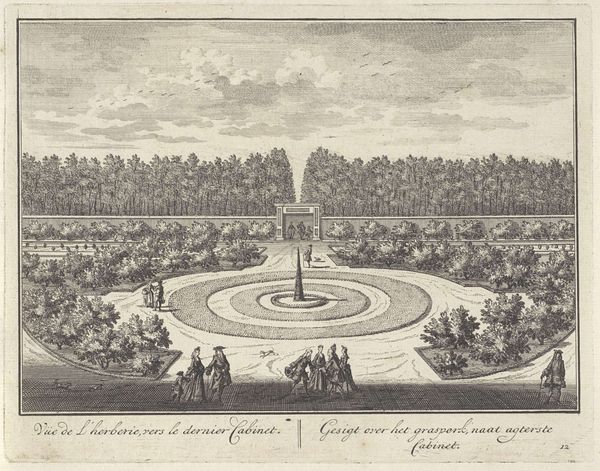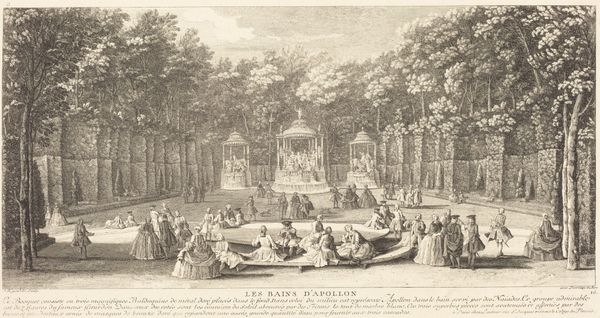
print, etching, engraving
#
pen and ink
#
baroque
# print
#
etching
#
landscape
#
engraving
Copyright: National Gallery of Art: CC0 1.0
Jean-Baptiste Rigaud created this print, L'Obelisque, using etching and engraving techniques. These processes, reliant on skilled labor, allowed for the mass production of images, fueling a growing market for visual representations of luxury and leisure. Notice how the stark lines of the engraving emphasize the geometric formality of the garden design. This was a moment when landscapes were being radically reshaped to express human control over nature. Rigaud’s intricate work captures the texture of the meticulously manicured trees and the cascading water of the obelisk fountain. The very act of etching—carefully incising lines into a metal plate—mirrors the human effort required to impose such strict order on the natural world. The print also provides a glimpse into the social life of the time, depicting elegantly dressed figures strolling through the grounds. The production of such images, and the lifestyles they represent, were of course supported by a vast, often invisible, workforce. This reminds us that art and design are always embedded in complex social and economic systems. By considering the materials, making, and context of this print, we can gain a richer understanding of its cultural significance, moving beyond traditional distinctions between fine art and craft.
Comments
No comments
Be the first to comment and join the conversation on the ultimate creative platform.
